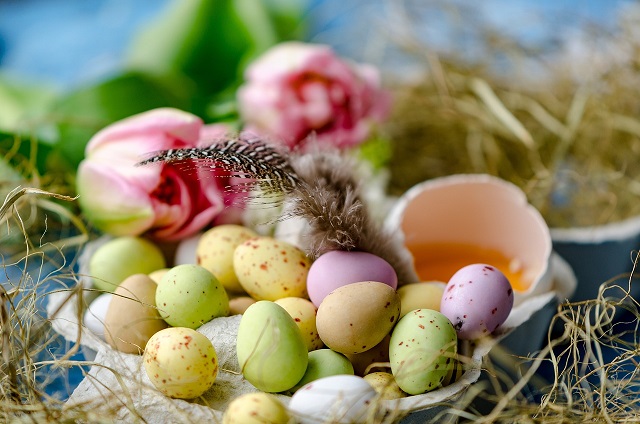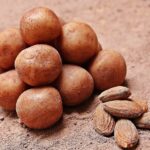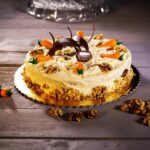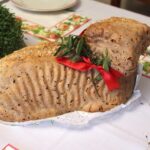
Easter in Germany wouldn’t be complete without the delicate sweetness of Marzipan-Eier. These handcrafted marzipan eggs are a traditional German Easter treat, known for their rich almond flavor and smooth texture. Whether coated in chocolate, dusted with cocoa, or rolled in powdered sugar, these eggs are a delight for marzipan lovers.
Marzipan, made from ground almonds and sugar, has been a beloved confection in Germany for centuries. It is especially popular during holidays, and at Easter, it is shaped into eggs, rabbits, and chicks. These homemade marzipan Easter eggs make a perfect gift or festive addition to any Easter dessert table.
In this guide, we’ll explore the history of Marzipan-Eier, its cultural significance, and provide a step-by-step recipe so you can make these delicious Easter treats at home.
History & Cultural Significance
The Origins of Marzipan-Eier
Marzipan has a long history in Germany, with its origins tracing back to the Middle Ages. It was originally considered a luxury treat, often enjoyed by royalty and nobility. Over time, marzipan became a staple of German confectionery, particularly in cities like Lübeck and Königsberg, which are famous for their high-quality marzipan.
At Easter, marzipan is shaped into eggs, bunnies, and lambs, symbolizing fertility, new life, and the arrival of spring. While commercially produced Marzipan-Eier are widely available in Germany, many families prefer to make their own at home, using pure almond marzipan and decorating them with chocolate, cocoa, or colorful sugar coatings.
Want to explore more German Easter recipes? Check out our articles on Osternest-Kekse and Traditional Dishes for Ostern.
Ingredients & Preparation (Step-by-Step Recipe Guide)
Ingredients for Authentic Marzipan-Eier
Marzipan Dough:
- 200g (2 cups) ground almonds (blanched)
- 200g (1 ¾ cups) powdered sugar
- 1 egg white (or 1 tbsp water for a vegan version)
- ½ tsp almond extract (optional)
- 1 tsp lemon juice (to enhance flavor)
For Decoration:
- 100g (1 cup) melted dark or milk chocolate (for coating)
- 2 tbsp cocoa powder (for dusting)
- 2 tbsp powdered sugar (for rolling)
Substitutes: If you don’t have ground almonds, you can use store-bought marzipan and shape it into eggs. For a smoother marzipan, blend the almonds and sugar together before adding liquid ingredients.
How to Make Marzipan-Eier (Step-by-Step Instructions)
Step 1: Prepare the Marzipan Dough
- In a mixing bowl, combine ground almonds and powdered sugar.
- Add egg white, almond extract (if using), and lemon juice.
- Knead the mixture with your hands until a smooth, pliable dough forms.
- Wrap the dough in plastic wrap and let it rest for 30 minutes at room temperature.
Step 2: Shape the Marzipan Eggs
- Divide the dough into small portions and roll each piece into an egg shape.
- Place the shaped eggs on a parchment-lined tray and let them dry for 1-2 hours.
Step 3: Coat and Decorate
- For chocolate-coated eggs, dip each marzipan egg in melted chocolate and place it on a cooling rack until set.
- For cocoa-dusted eggs, roll the eggs in a light layer of cocoa powder.
- For powdered sugar-coated eggs, roll the eggs in powdered sugar until evenly coated.
Pro Tip: For colorful marzipan eggs, knead a few drops of food coloring into the marzipan before shaping.
Serving Suggestions & Variations
How to Serve Marzipan-Eier
Marzipan-Eier are best served as a festive Easter treat alongside:
- A cup of espresso or hot chocolate
- A selection of German Easter cookies
- As part of an Easter dessert platter with fruit and nuts
Variations & Regional Twists
In Lübeck, marzipan is often shaped into detailed Easter figures, such as rabbits or lambs, and hand-painted with food coloring. In Austria, Marzipan-Eier are sometimes flavored with rum or orange liqueur for an extra depth of flavor. In southern Germany, finely chopped pistachios or hazelnuts are added for texture.
Want to try another German Easter candy? Check out our Schokoladenhasen (Chocolate Easter Bunnies) recipe.
Baking Marzipan-Eier at home is a fun and delicious way to celebrate Easter. These rich, almond-based confections are perfect for gifting, decorating, or simply enjoying as a sweet treat. Whether coated in chocolate, cocoa, or powdered sugar, these traditional marzipan eggs bring a taste of Germany to your Easter celebrations.
Looking for more traditional German Easter recipes? Explore our recipes for Osternest-Kekse, Rüblikuchen, and Hefezopf.







